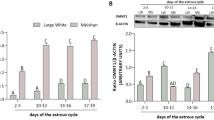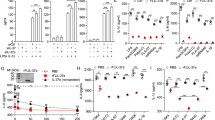Abstract
The systemic inflammatory response syndrome (SIRS) is characterized by endothelial cell activation causing a generalized inflammatory response and cytokine-mediated pathophysiological alterations.1–2 The pathophysiology of SIRS involves changes in the functioning of several endocrine glands, including the pituitary.1–3 SIRS-induced alterations in pituitary function include activation of the hypothalamic-pituitary adrenal (HPA) axis causing hypercortisolemia, the euthyroid sick syndrome, and cessation of reproductive function. These changes are in part mediated by cytokines, such as tumor necrosis factor α (TNF-α) and interleukin 1 (IL-1). 4,5 IL-1 function depends on the local ratio of bioactive IL-1 and IL-1 receptor antagonist.6,7 Here we review our studies on IL-1βand IL-1ra mRNA levels in the pituitary in a rat model of SIRS.8,9 We have found that IL-1βmRNA peaked at 2 h after lipopolysaccharide (LPS) administration, increasing twelvefold over control values in the posterior pituitary and fivefold over controls in the anterior pituitary. IL-1ra mRNA levels peaked at 6 h post-LPS administration, later than those of IL-1β mRNA. IL-1ra mRNA levels increased tenfold in the anterior pituitary, but were induced only threefold in the posterior pituitary. IL-1ra gene expression is profoundly induced in the pituitary in vivo during systemic inflammation and its induction follows that of IL-1β, but it is differentially regulated and tissue- specific, occurring predominantly in the anterior pituitary. Future studies of the effects of IL-1 in the pituitary should take into account the local levels of IL-1ra.
This is a preview of subscription content, access via your institution
Access options
Subscribe to this journal
Receive 12 print issues and online access
$259.00 per year
only $21.58 per issue
Buy this article
- Purchase on Springer Link
- Instant access to full article PDF
Prices may be subject to local taxes which are calculated during checkout
Similar content being viewed by others
Author information
Authors and Affiliations
Rights and permissions
About this article
Cite this article
Licinio, J., Wong, ML. Interleukin 1 receptor antagonist gene expression in rat pituitary in the systemic inflammatory response syndrome: pathophysiological implications. Mol Psychiatry 2, 99–103 (1997). https://doi.org/10.1038/sj.mp.4000251
Received:
Accepted:
Issue Date:
DOI: https://doi.org/10.1038/sj.mp.4000251



